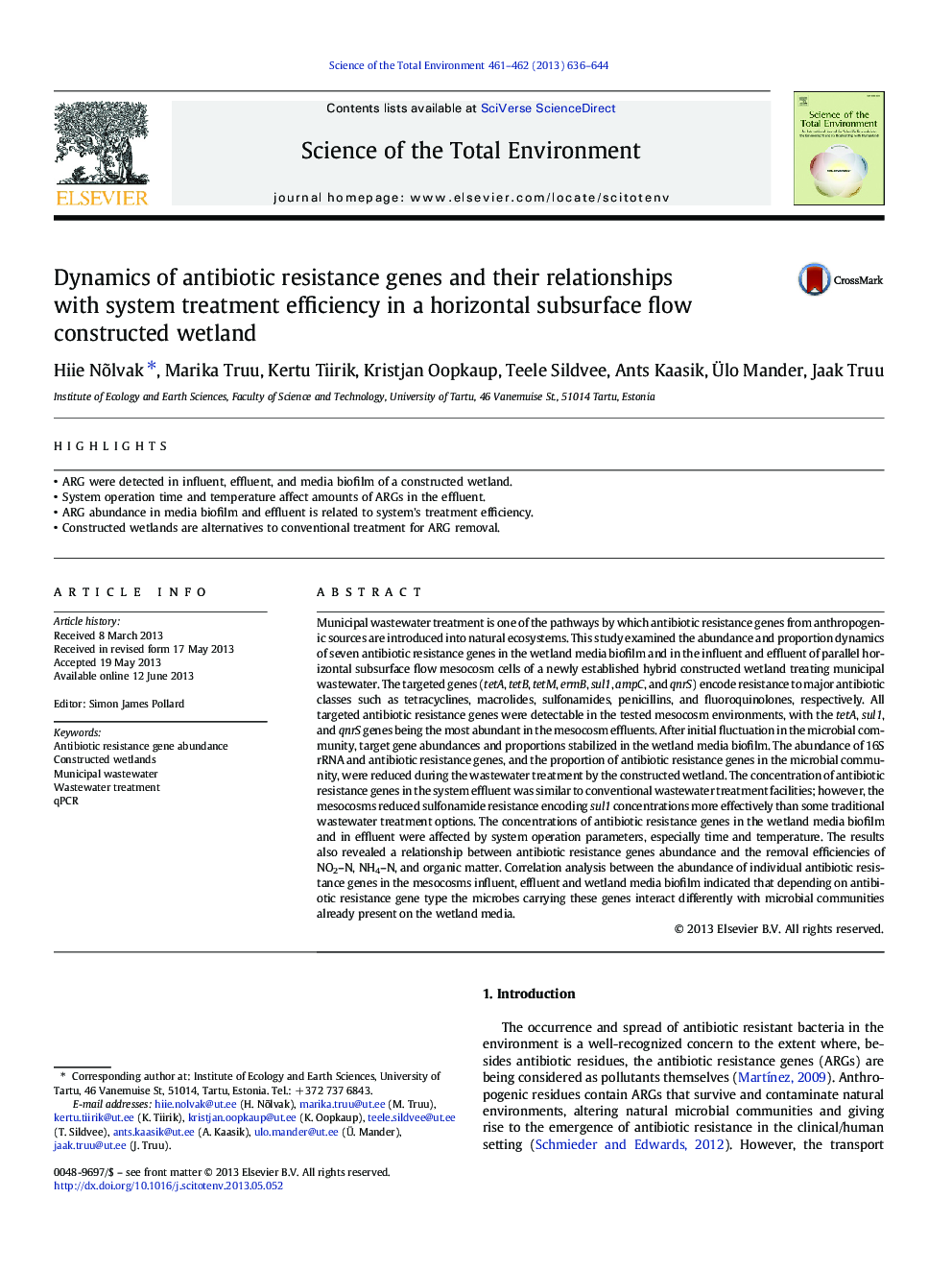| کد مقاله | کد نشریه | سال انتشار | مقاله انگلیسی | نسخه تمام متن |
|---|---|---|---|---|
| 6332009 | 1619799 | 2013 | 9 صفحه PDF | دانلود رایگان |
عنوان انگلیسی مقاله ISI
Dynamics of antibiotic resistance genes and their relationships with system treatment efficiency in a horizontal subsurface flow constructed wetland
ترجمه فارسی عنوان
دینامیک ژن های مقاوم به آنتی بیوتیک و روابط آنها با کارایی سیستم درمان در یک تالاب ساخته شده از جریان آب زیرزمینی
دانلود مقاله + سفارش ترجمه
دانلود مقاله ISI انگلیسی
رایگان برای ایرانیان
کلمات کلیدی
موضوعات مرتبط
علوم زیستی و بیوفناوری
علوم محیط زیست
شیمی زیست محیطی
چکیده انگلیسی
Municipal wastewater treatment is one of the pathways by which antibiotic resistance genes from anthropogenic sources are introduced into natural ecosystems. This study examined the abundance and proportion dynamics of seven antibiotic resistance genes in the wetland media biofilm and in the influent and effluent of parallel horizontal subsurface flow mesocosm cells of a newly established hybrid constructed wetland treating municipal wastewater. The targeted genes (tetA, tetB, tetM, ermB, sul1, ampC, and qnrS) encode resistance to major antibiotic classes such as tetracyclines, macrolides, sulfonamides, penicillins, and fluoroquinolones, respectively. All targeted antibiotic resistance genes were detectable in the tested mesocosm environments, with the tetA, sul1, and qnrS genes being the most abundant in the mesocosm effluents. After initial fluctuation in the microbial community, target gene abundances and proportions stabilized in the wetland media biofilm. The abundance of 16S rRNA and antibiotic resistance genes, and the proportion of antibiotic resistance genes in the microbial community, were reduced during the wastewater treatment by the constructed wetland. The concentration of antibiotic resistance genes in the system effluent was similar to conventional wastewater treatment facilities; however, the mesocosms reduced sulfonamide resistance encoding sul1 concentrations more effectively than some traditional wastewater treatment options. The concentrations of antibiotic resistance genes in the wetland media biofilm and in effluent were affected by system operation parameters, especially time and temperature. The results also revealed a relationship between antibiotic resistance genes abundance and the removal efficiencies of NO2-N, NH4-N, and organic matter. Correlation analysis between the abundance of individual antibiotic resistance genes in the mesocosms influent, effluent and wetland media biofilm indicated that depending on antibiotic resistance gene type the microbes carrying these genes interact differently with microbial communities already present on the wetland media.
ناشر
Database: Elsevier - ScienceDirect (ساینس دایرکت)
Journal: Science of The Total Environment - Volumes 461â462, 1 September 2013, Pages 636-644
Journal: Science of The Total Environment - Volumes 461â462, 1 September 2013, Pages 636-644
نویسندگان
Hiie Nõlvak, Marika Truu, Kertu Tiirik, Kristjan Oopkaup, Teele Sildvee, Ants Kaasik, Ãlo Mander, Jaak Truu,
